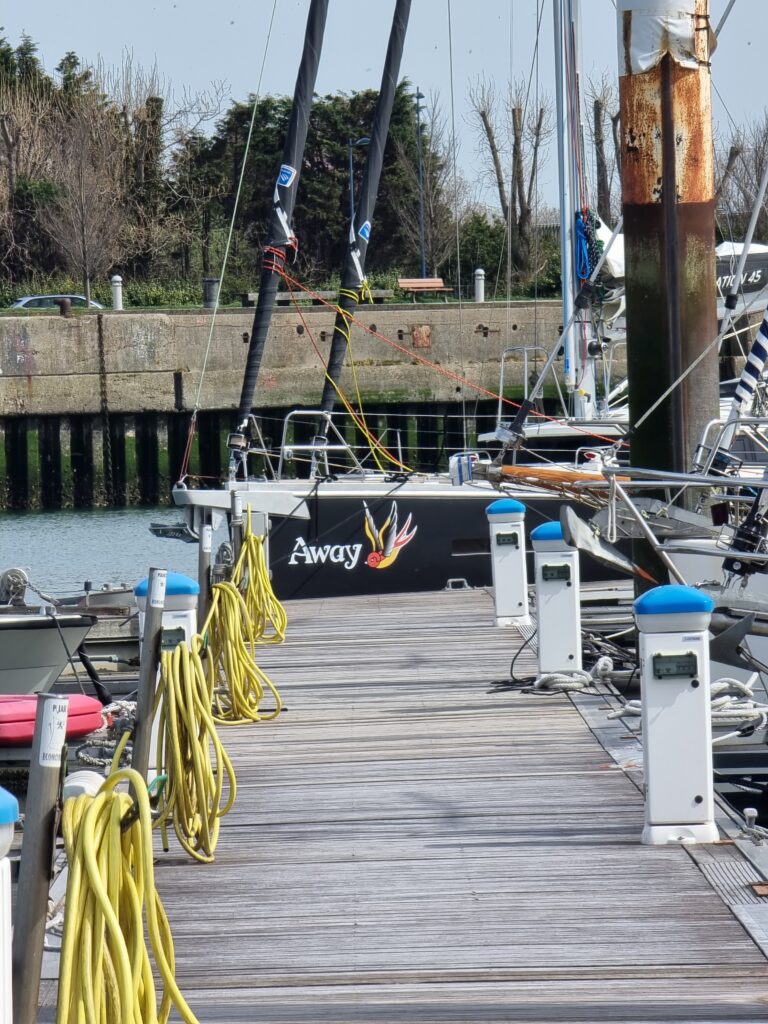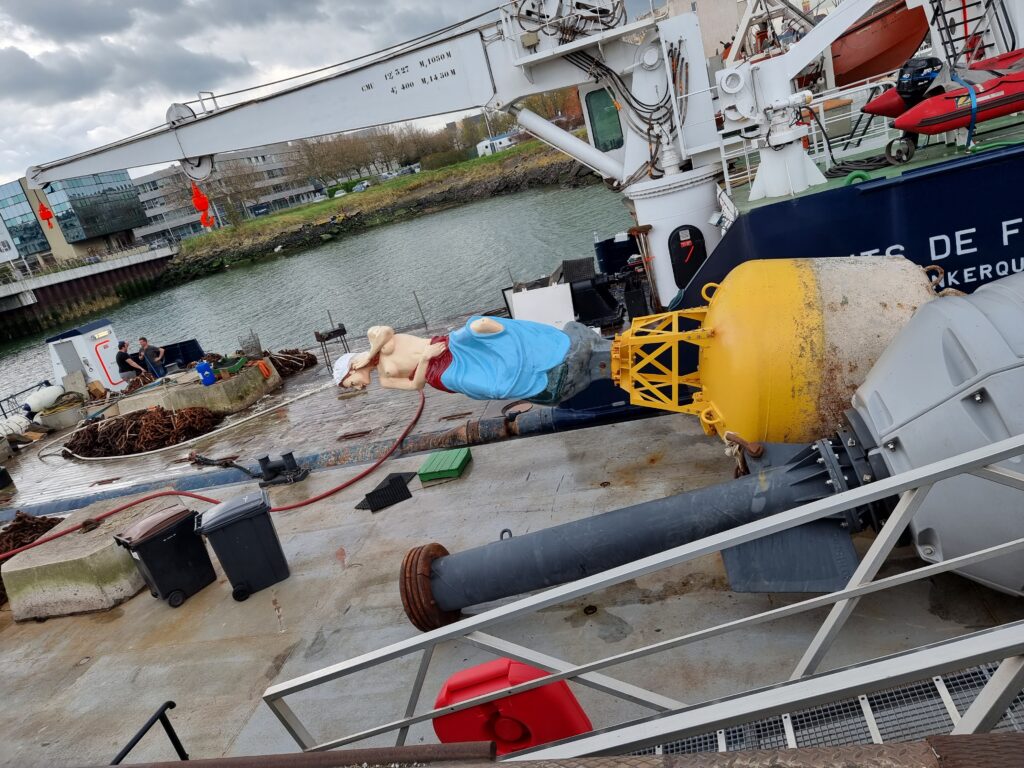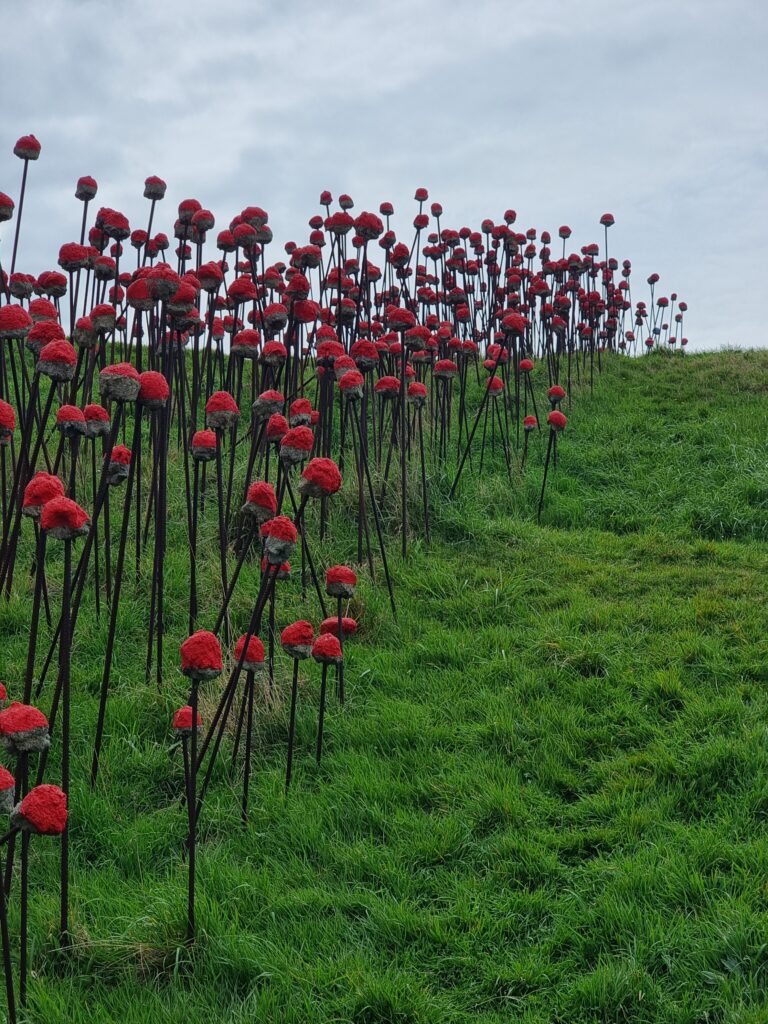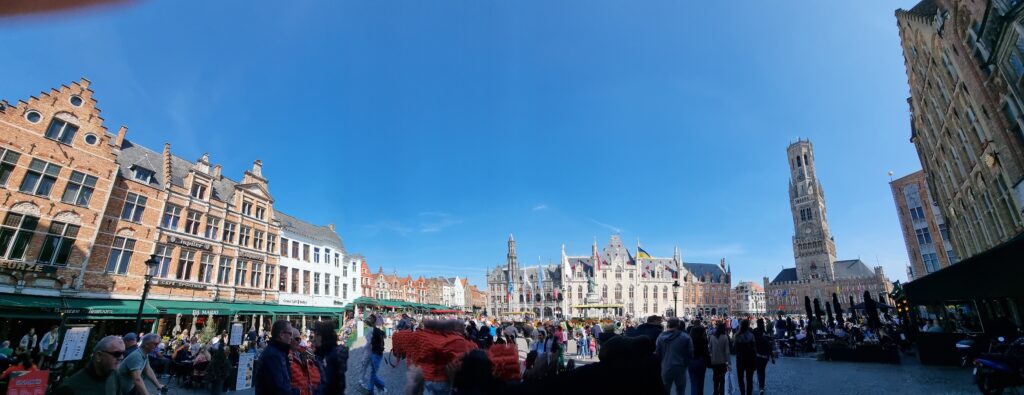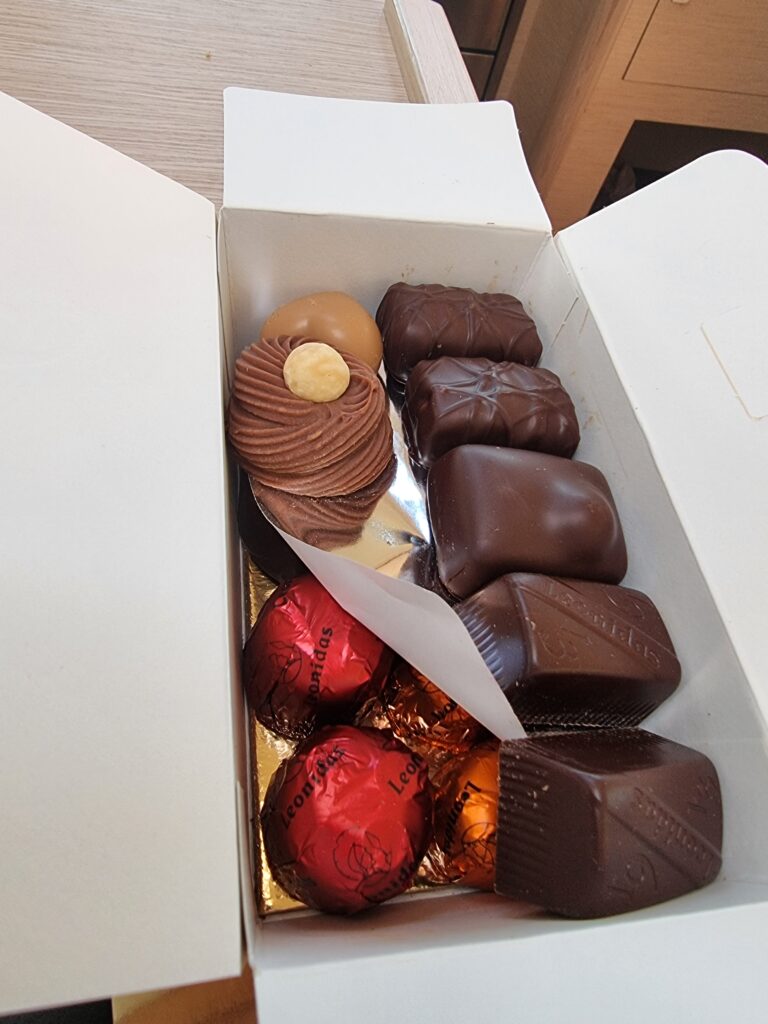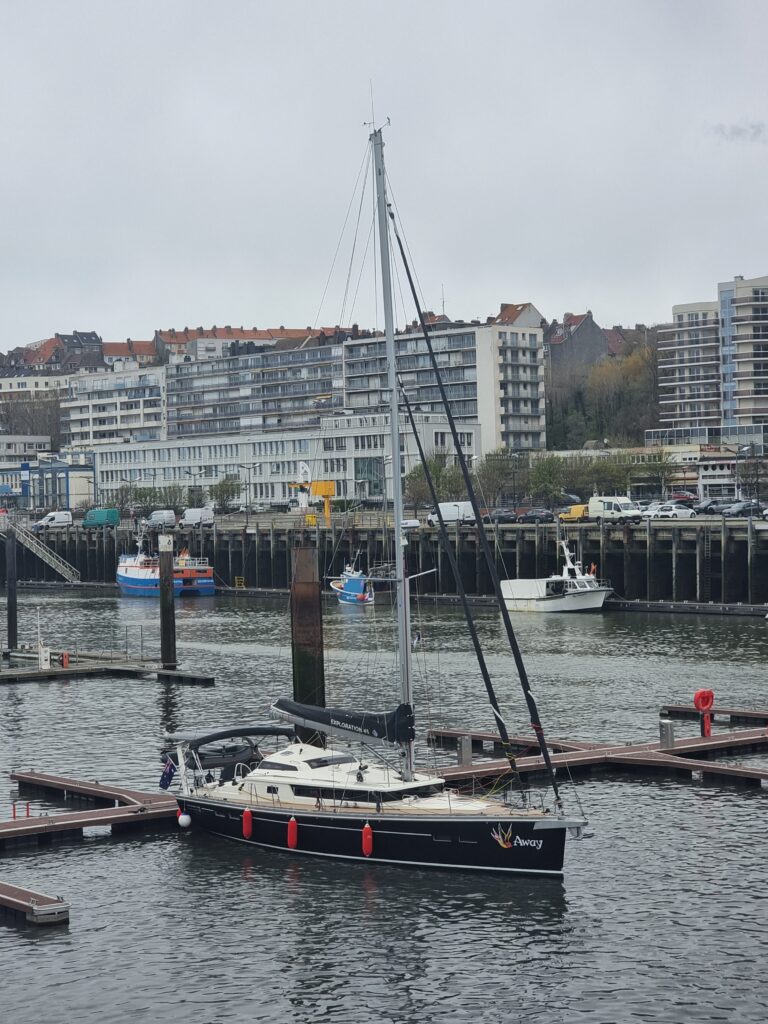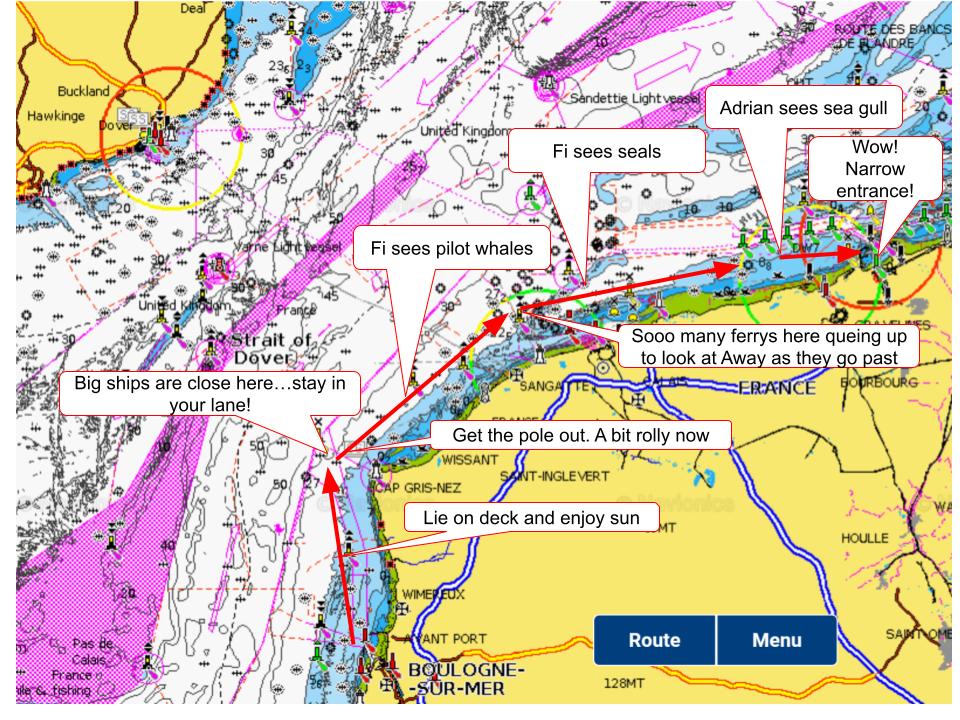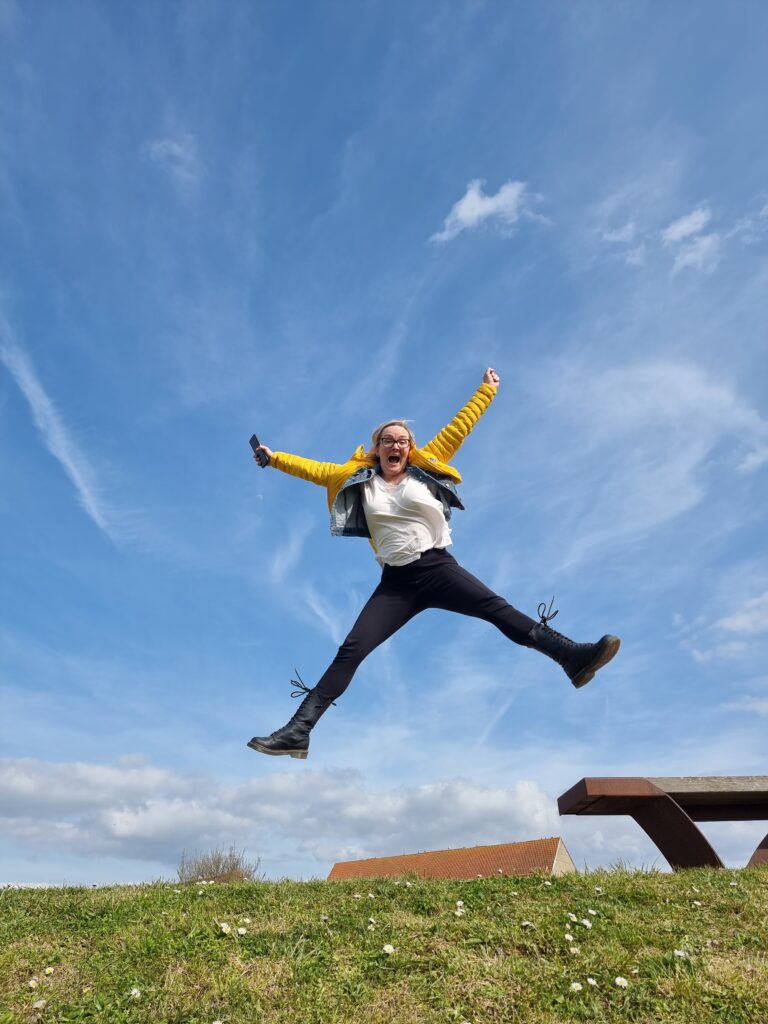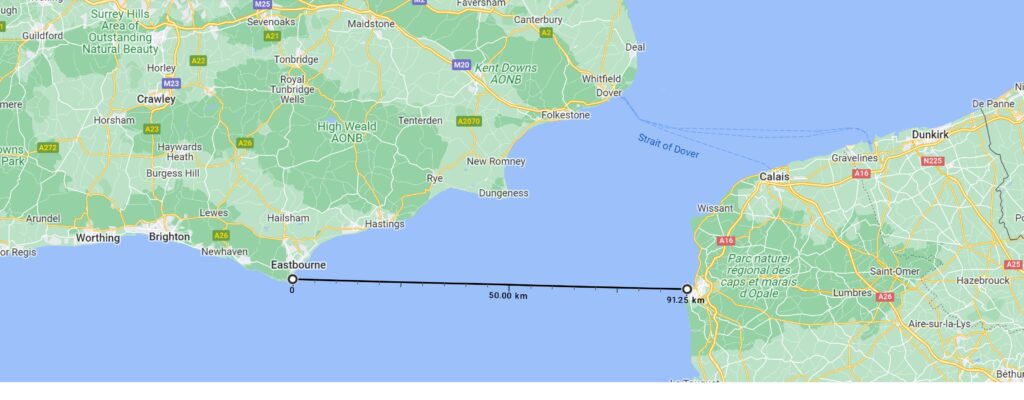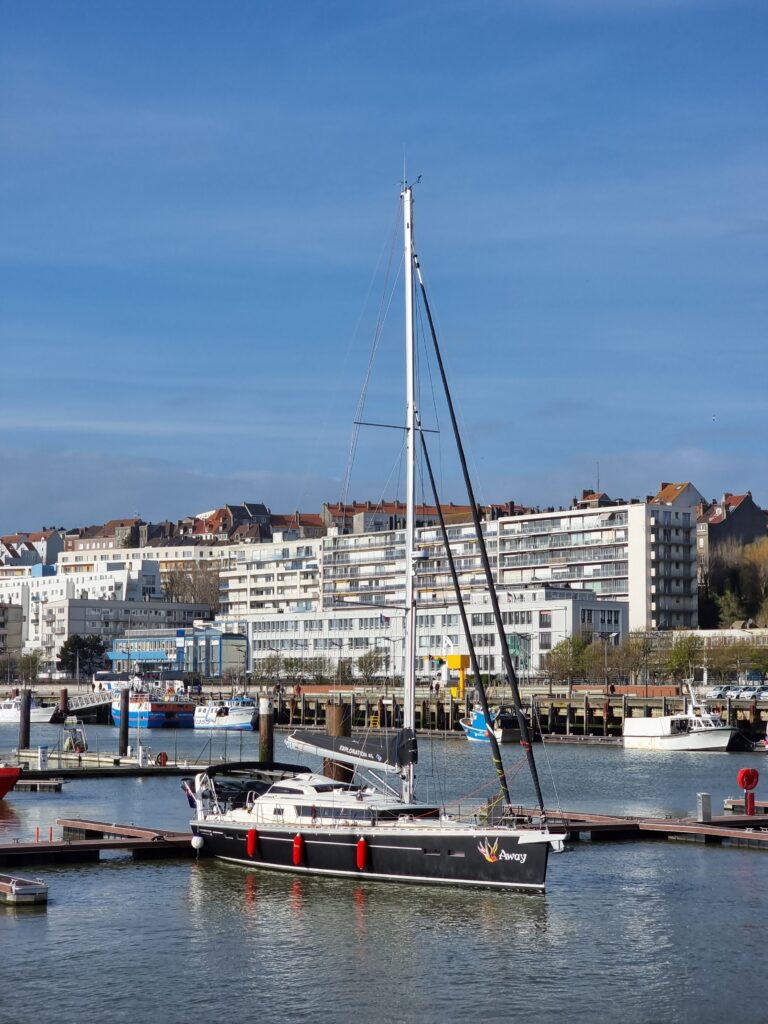
The Belgium coast is built with flats and beach bars along the shoreline. Whilst there is no obvious line in the sea when you cross into the Netherlands, the change in the coastline is dramatic as flats give way to smaller houses and even gaps in the buildings. We replaced our Belgian courtesy flag with our Dutch courtesy flag.

As the shipping got more frequent we had our fenders at the ready in case they got too close.


We saw a large container ship on the horizon, about 15 minutes away, and darted across the first shipping channel. We considered crossing the second channel but noticed that the channel was effectively on the beach. We waited for a barge and a tanker and then scampered across the channel into the Vlissingen entrance, a tiny area where pilot boats enter and exit at 40 knots every few minutes whilst you try to line up the ‘barely as wide as the boat’ entrance to the harbour (you can spot the entrance in the photo). If you are lucky, wait staff at the local restaurant notice your plight, raise the bridge and shout your berth number as you thread the needle into the marina. We were, in this case, lucky.


There was a restaurant in an old gaol tower on the sea front, where we could watch the big ships passing and pilot boats rushing around without the stress of having to avoid them.



Next day was a short sprint up the river and into the canals. Fi spoke to the sea lock master on the radio and he opened the lock, let us in and told us the starting time for the ‘Blue Wave’. In this area they group boats into waves so that the bridges only open for a group of boats. Its still early in the year and our wave was only us and a medium size barge that we followed.
It was a gorgeous day and it felt great to be on canals again! Bernie was loving his life.


After a couple of hours, and a few bridges that lifted for us we were safely tied to the wharf at Middelburg. Later in the day, when all the berths had a gone, a training yacht appeared and we had our first experience of rafting up with another boat. There was a lot of shouting and throwing lines. And then, once they were in, we learned that 5 out of the 6 people on the boat had just completed their very first day of sail boat training.


The sun was shinning so we walked through cobble stone lanes, squares and canals. We enjoyed lunch in the sun.

Our Brompton folding bikes seemed all at home in London where many of their relatives are to be found. But here in the Netherlands they seem out of place where the average bike has disk brakes, onboard computer, automatic transmission, integrated security and 200hp assisted peddling.
We had read a blog of another yacht that had anchored for a few days in the Veerse Meer, a lake that we would pass through the next day. Keen to have a night away from marinas we headed to the area they described and found small islands with pontoons. As there is no tide here its not a good idea to go aground. We approached slowly with the center-board half down. We touched down a few meters from the pontoon and decided it was safe enough to continue with the center-board raised.
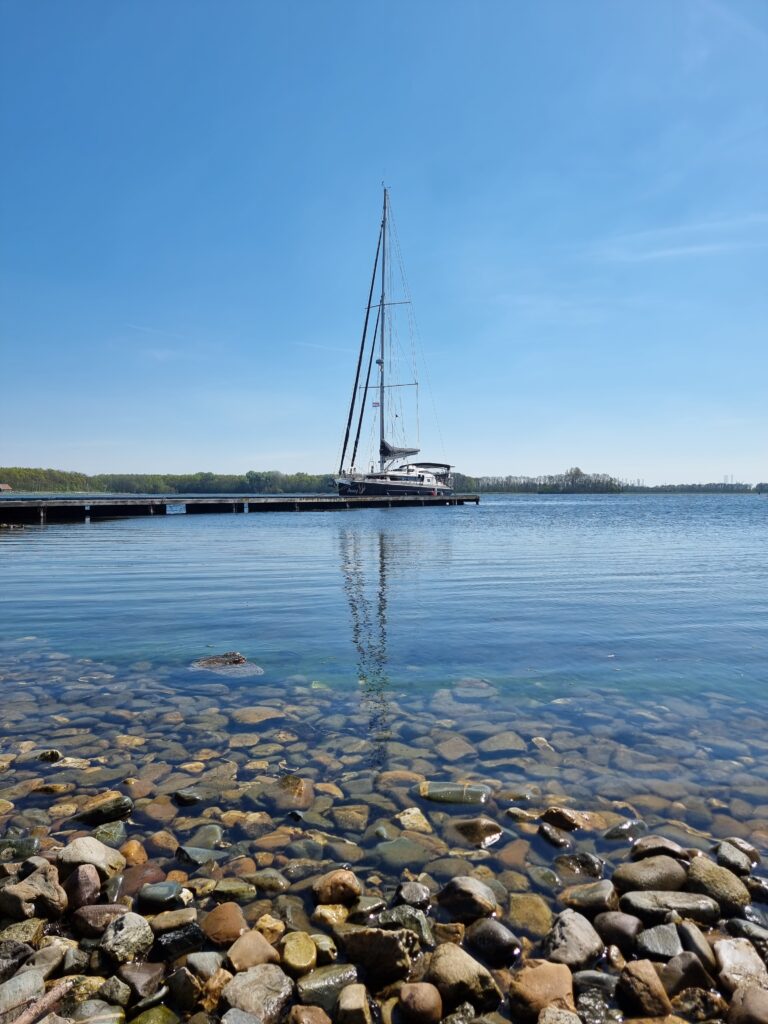
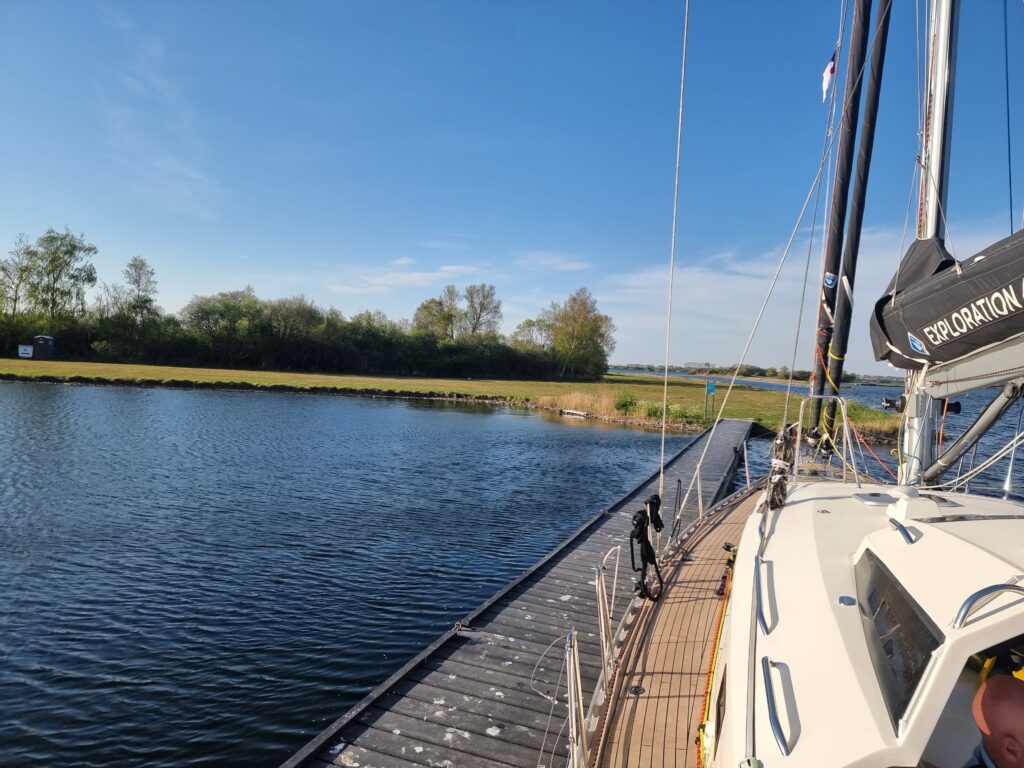
We were the only people on the island and enjoyed an idyllic afternoon eating cheese, sipping wine and sniffing duck poo. Fi enjoyed a little nap on the picnic blanket.



The boat on the left is a barge very full of scrap metal that decided to take the shallow channel around the islands. They spend much of the afternoon engine revving but not moving until the boat on the right appeared to help. At dusk the helping boat abandoned the stranded barge and the next morning we met various tugs heading down the channel towards the scene. I considered calling him on the radio and suggesting he raise his centre-board, but decided it might not be helpful.

The next day we headed through some locks and into a marina (Kats) for our haul out. It was a tight cross wind approach to the slings of the lift. And after a Dutch/English discussion about boat sizes, we decided to leave and find another larger lift rather than risk rigging adjustments.
We stopped for a night, that ended up being two, at Bruinisse. Strong winds made the idea of negotiating lots of locks unappealing.


The next day we felt that the winds had dropped enough to leave little Brunisse. Firstly we would have to navigate the Krammer lock. At the lock, we were too high with our mast to fit into the ‘Sport’ (read: “pleasure boat”) boat lock and had to join the big boys and girls in the commercial lock. There was a little confusion when they told us to go into the port lock as the sport boat lock is on the port side, but they soon corrected us over the radio when they saw our AIS track going the wrong way.

They put the big boats in first and then we squeeze in behind them. Surely the little boats will leave first so we don’t get crushed or churned up in the wash…
At our final lock of the day just before Willemstad, we called the ‘Sports’ lock who advised us to go to the commercial lock. We know the routine now and called the commercial lock who said ‘No problem with the bridge’. Great, no problems, but why did he need to tell us? They loaded a barge into the lock and closed the gates. We called again. This time we understood ‘No. Problem with the bridge’, but we could stay at the sports lock pontoon for the night and they might, maybe, possibly have it fixed tomorrow.
We were met at the pontoon by a who’s who of blue water cruising yachts, all too tall to fit through the sports lock. Would we be stranded on this pontoon for weeks waiting for the bridge to open?




